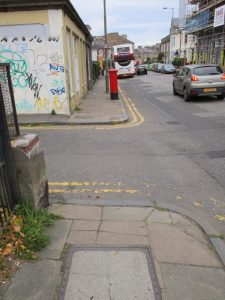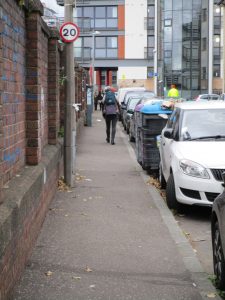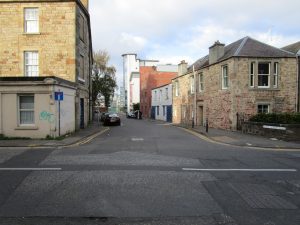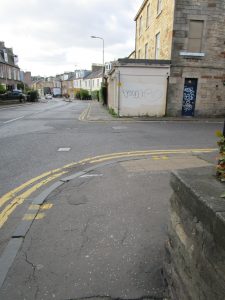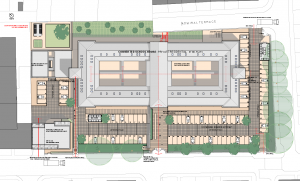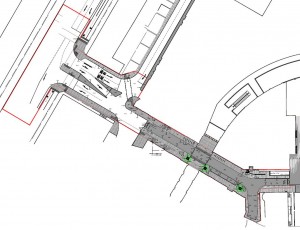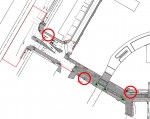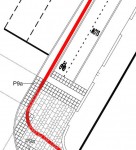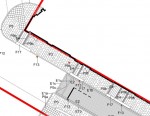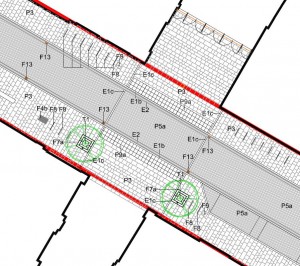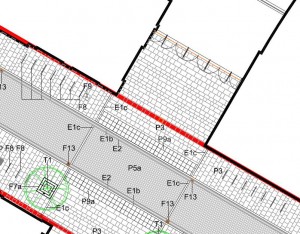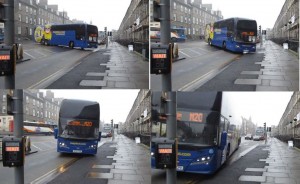- Please accept these comments from Living Streets Edinburgh in response to the Council’s Meadowbank consultation.
- Living Streets Edinburgh aims to promote walking as a safe, enjoyable and easy way of getting around Edinburgh and to achieve this we want to see:
- Walking given the top priority over other forms of travel in all Council transport and planning policies
- Reduction in the volume of motorised traffic and its impact on people using the street
- Better designed and maintained pavements, road crossings and other pedestrian facilities
- More effective and joined-up monitoring and inspection of the walking environment by Edinburgh Council
- Planning policy which encourages dense, sustainable housing over car-dominated development
- More effective implementation of pro-walking policies ‘on the ground’.
- Given its role in Meadowbank, the Council is in the position of being able to set an example by planning and implementing development of the site to reflect these objectives in accordance with national and local planning policy.
- Scottish Planning Policy (SPP) has clear statements on reducing reliance on private cars and prioritising sustainable and active travel choices (para 46) and promoting opportunities for travel by more sustainable modes in the following order of priority: walking, cycling, public transport, cars (para 273).
- The aims of the Local Development Plan (LDP) include:
- help ensure that the citizens of Edinburgh can get around easily by sustainable transport modes to access jobs and services
- look after and improve our environment for future generations in a changing climate.
- The Transport Section of the LDP states that the relationship between land uses and how people move between them is fundamental in promoting sustainable development and its objectives include:
- to minimise the distances people need to travel
to promote and prioritise travel by sustainable means i.e. walking, cycling and by public transport - to minimise the detrimental effects of traffic and parking on communities and the environment.
- to minimise the distances people need to travel
- The Council’s Design Guide states that greater emphasis has now been placed on creating places that support the development of a compact, sustainable city. There is support for active travel and public transport, revised parking controls in new developments and encouragement for high density to make public transport more viable.
- The Council has recently resolved to consult on a prospectus – ‘Connecting Our City, Transforming Our Places’. The prospectus builds on existing national and local policy and states, inter alia: ‘By 2040, Edinburgh’s population will be close to 600,000, an increase of 100,000, and the city-region is also growing, accounting for a quarter of the Scottish population. This growth and the potential strain on the transport network and city spaces needs to be managed to improve access to public transport, increase journeys on foot and by bike, and prevent unsustainable increases in car travel. We must join cities like Copenhagen, Oslo, Barcelona and other leading cities in reshaping how our city works and become synonymous with urban innovation if we are to meet the economic, social and environmental challenges we face.’
- Within this context it is clear that there is both a requirement and a commitment by the Council to make a break from the traditional car based approach to development and put people first. Meadowbank is an ideal location for this approach to be put into practice.
- The Transport Assessment submitted with the application for planning permission in principle clearly identified the problems that already exist with the surrounding road network/traffic management infrastructure and the unacceptable impact that further development would have.
- A radical approach is therefore justified which should be based on the following:
- Taking a starting point that the development will be car free (as allowed for by Policy TRA2 in the LDP) apart from provision required for disabled residents/visitors and essential servicing.
- Create an attractive and safe environment for pedestrians and cyclists within the new development with links to the surrounding active travel network.
- In association with the above, identify and implement improvements to the off site active travel network. This should include converting the now redundant rail line to Powder Hall to create a high quality of walk/cycleway to Easter Road, Leith Walk, the wider North Edinburgh Path Network and off road routes to Portobello and Leith Links.
- The Abbeyhill loop line should be included within the active travel network and the rail solum protected to facilitate potential future return to rail use to alleviate congestion at the east end of Waverley Station.
- The area enjoys a good level of bus services, which should be enhanced and made an even more attractive proposition.
- Use the project as an opportunity to enhance off-site management and secure improvements to the surrounding road network to improve air quality and create a more attractive environment for active travel.
- Promote the development as car free, make it clear that parking permits will not be granted for adjoining streets and introduce incentives for active travel and public transport.
- There is a real opportunity in Meadowbank and other sites within its control for the Council to take a lead and create exemplars for urban living that reflect Edinburgh’s position as a major European city.
- Within this context Living Streets Edinburgh would be extremely happy to work with the Council and others to ensure that Meadowbank gets a development that we can all be proud of.
- When progress on Meadowbank next comes before the Council we respectfully request that this submission be reported in full without editing or précis.
LSEG 6 September 2018
The document is available as here as a PDF file here


